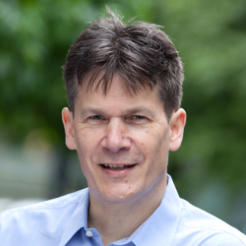People think charities spend just 38 per cent of their income on ‘the cause’, but they believe organisations should be spending 65 per cent, according to new research by nfpSynergy.
The report says that charities are up against a sceptical public and ingrained perceptions of the sector that are proving difficult to shift – people estimate that charities spend 37 per cent of their income on so-called ‘admin costs’, more than double the 15 per cent they think is acceptable.
NfpSynergy, a research consultancy, surveyed 1,000 UK adults for the report and found that 65 per cent thought a charity’s chief executive counts as spending on administration.
Even a director managing several medical research projects was labelled an admin cost by 45 per cent of those polled, as was paying volunteer expenses.
There was less of a gap between what people considered an appropriate proportion of income to spend on fundraising, 20 per cent, compared to how much they thought charities actually spend - 26 per cent.
When asked about what counts as ‘admin’ or ‘cause’ costs, a nurse feeding children in a refugee camp was the option most people, 64 per cent, thought was spending on the cause.
The research shows that 55 per cent said spending on a therapist giving counselling was money going to the cause, although 13 per cent thought this was an admin cost and 24 per cent were not sure.
Thirty-five per cent of those polled thought a person campaigning to change the law was money spent on the cause.
“Clearly, many types of expenditure are viewed differently by the public than they are by charities, possibly explaining how pessimistic the public is about how much is spent on the cause,” the report says. “The public view of ‘the cause’ is evidently narrower than charities’ own view.”
In response to the findings, Joe Saxton, founder of nfpSynergy, said: “Charities must start talking to donors, volunteers and the public and they must do it regularly, powerfully and with passion to help people understand not only what their money is being spent on, but also why it is money well spent.
“The public tend to overestimate how much is spent on fundraising and ‘admin’ and underestimate how much is spent on ‘the cause’.
“Worse still, the public is much stricter than charities when it comes to defining spending on ‘the cause’. Charities will have to work much harder if they are to close the gap between public perception and charity reality.”









